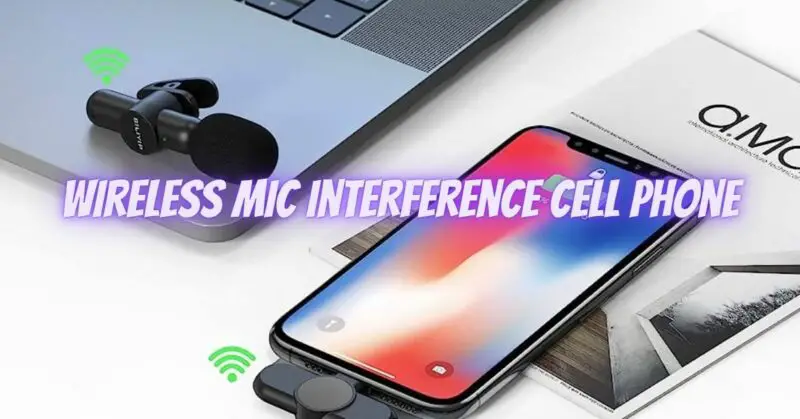Wireless microphones have revolutionized the way we capture audio, offering freedom of movement and flexibility in various settings. However, one common challenge that users may face is interference caused by cell phones. The signals emitted by cell phones can disrupt the performance of wireless microphones, resulting in unwanted audio artifacts or dropouts. In this article, we will explore the causes of wireless microphone interference from cell phones and discuss strategies to minimize and mitigate this issue.
- Understanding Interference:
Interference occurs when the radio frequencies used by wireless microphones overlap with those of cell phone signals. The interference can manifest as static, buzzing sounds, or even complete audio dropout. Cell phones operate on different frequency bands, such as 2G, 3G, 4G, and now 5G, each with its unique characteristics and potential for interference.
- Causes of Interference:
Several factors contribute to wireless microphone interference from cell phones:
- Proximity: The closer a cell phone is to a wireless microphone, the higher the chances of interference.
- Signal Strength: Strong cell phone signals in the vicinity can overpower the comparatively weaker wireless microphone signals.
- Frequency Overlap: In some cases, wireless microphones and cell phones may operate within the same frequency bands, leading to interference.
- RF Sensitivity: The susceptibility of wireless microphone systems to interference can vary, depending on their design and quality.
- Minimizing Interference:
While complete elimination of interference may not always be possible, you can take the following measures to minimize its impact:
- Frequency Coordination: Use frequency coordination tools or consult frequency databases to select clear and unoccupied frequency channels for your wireless microphones. This reduces the chances of overlap with cell phone signals.
- Distance and Placement: Maintain a sufficient distance between wireless microphones and cell phones. Keep cell phones away from the receivers and transmitters to reduce the likelihood of interference.
- Shielding and Filtering: Implement shielding techniques, such as using ferrite cores or shielding enclosures, to minimize electromagnetic interference. Additionally, employ RF filters or combiners to reduce interference from nearby cell phone signals.
- Antenna Placement: Optimize antenna placement for better signal reception and transmission. Consider using directional antennas to focus on desired audio sources and minimize interference from cell phones.
- Receiver Sensitivity: Choose wireless microphone systems with high-quality receivers that offer robust sensitivity and interference rejection capabilities.
- Communication and Education:
In situations where interference is likely, such as live events or crowded venues, it’s important to communicate with performers, speakers, and event attendees about the potential impact of cell phone usage. Educating them on the importance of minimizing cell phone proximity to wireless microphones can help prevent interference incidents.
- Monitoring and Troubleshooting:
Regularly monitor wireless microphone performance during rehearsals and performances. If interference occurs, identify the source and take appropriate action, such as adjusting frequencies, relocating equipment, or requesting cell phone usage guidelines.
Conclusion:
Interference from cell phones can be a significant challenge when using wireless microphones. However, by understanding the causes and implementing mitigation strategies like frequency coordination, proper device placement, shielding techniques, and antenna optimization, you can minimize the impact of interference. Additionally, effective communication and monitoring during performances can further enhance the audio quality and reliability of wireless microphone systems. With careful planning and awareness, you can ensure uninterrupted and high-quality audio capture, even in the presence of cell phone signals.


